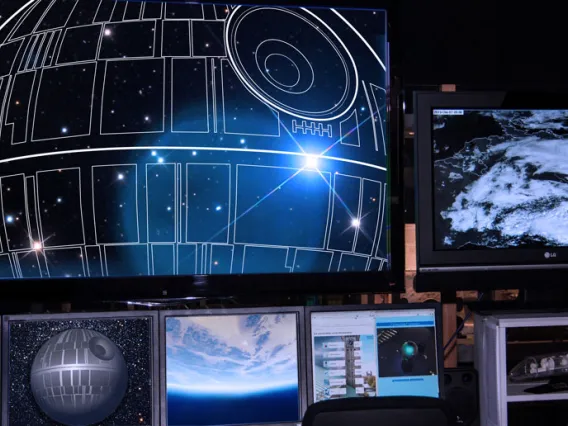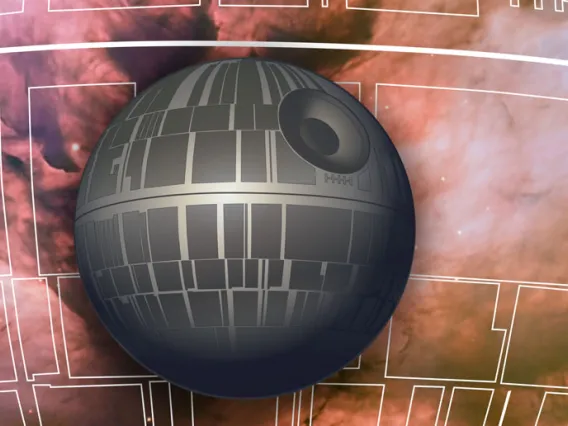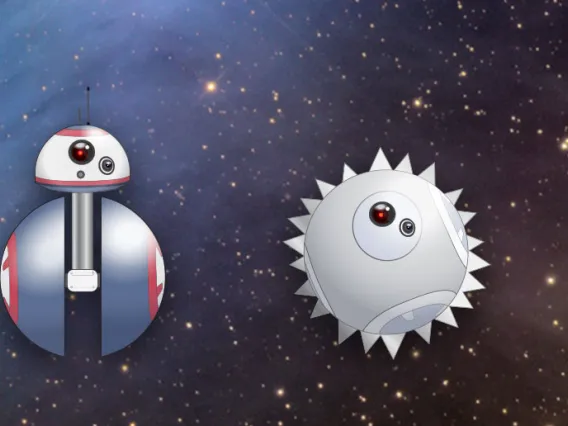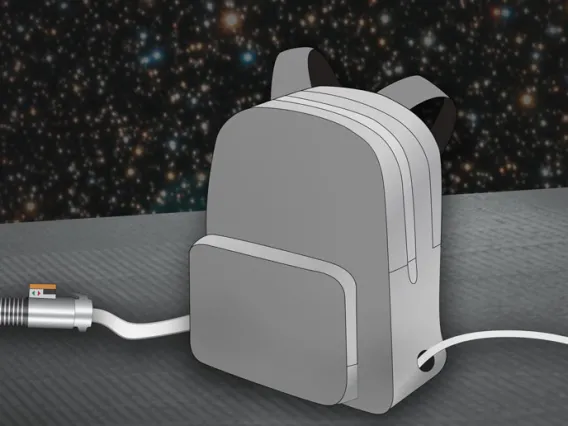“Star Wars” Science is a series of four stories with University of Arizona researchers applying real-world science to the classic American sci-fi saga. The series features interviews with researchers in optics, space systems engineering, robotics, and psychology.
What will you find in “Star Wars” Science?
Lots of awesome stuff. Here’s the gist:
- The Death Star: Systems engineer Roberto Furfaro addresses the proverbial elephant in the room. Ventilation holes in a spacecraft? Yes, it’s just as stupid as we thought. The Death Star is the size of the moon, and the bigger the spacecraft, the more heat it produces. How the engineers of the Death Star chose to deal with that heat was lazy, “terrible” design, according to Furfaro. A good systems engineer would’ve done better risk analysis and used radiators instead of holes to solve the Death Star’s heat problem. Read the full story: Risk Analysis of the Death Star Thermal Exhaust Port Design
- BB-8: According to world-renowned roboticist Wolfgang Fink, a BB-8-like rover that would be used for planetary exploration isn’t all that crazy. But how would we build one? He’s got some ideas. BB-8’s soccer-ball-like body is a smart choice, according to Fink, and a natural progression from its predecessors. By comparison, BB-8’s spherical, minimalistic body makes it a good candidate for covering rugged terrain and swimming. Fink says if he were to design a BB-8-like rover for planetary exploration, he’d probably use heavy-duty magnets for the head to control the movement of the body. Read the full story: How could BB-8 work?
- Lightsabers: Shouldn’t we have these by now? Optical scientist Jason Jones says it’s not so easy. Light physics are complicated. Light is made of photons, which don’t like to interact with each other, so sword-fighting with light would be futile. Plus, you’d need a really big battery. “Like in a lot of cool, important technological areas, batteries are the bottleneck,” says Jones. Read the full story: The Lightsaber's Energy Crisis
- Nostalgia: We grew up with “Star Wars.” We love it. Social psychologist Jeff Greenberg, who studies cinema, tells us how that affects our expectations for new “Star Wars” films. According to Greenberg, the reason kids who grew up on “Star Wars” remain emotionally invested in the franchise is twofold: it’s nostalgic, and most people are naturally inclined towards things that are familiar. “People are so invested in it being done right and in a way that resonates with an important part of their childhood. ‘Star Wars’ means a lot to people,” he says. Read the full story: For "Star Wars" Fans, Nostalgia Shapes Expectations

Rogue One: A Case Study in Cybersecurity
A University of Arizona cybersecurity expert has some words of wisdom for the Empire.

Risk Analysis Gone Wrong: A UA Space Systems Engineer Considers the Death Star
Do spacecrafts really have holes for ventilation? As director of the UA’s Space Systems Engineering Lab and an engineer for NASA’s OSIRIS-REx mission, Roberto Furfaro reflects on the Death Star’s infamous design flaw that lead to its destruction.

How Could BB-8 Work
Wolfgang Fink is a world-renowned roboticist who engineers free-thinking Mars rovers. As an avid “Star Wars” fan, these days he’s particularly interested in BB-8 and how he might build one in real life.

The Lightsaber's Energy Crisis
Jason Jones, an associate professor in the nation’s largest optics program, studies laser technology in his lab. Here, he contemplates an American icon: the lightsaber. Can they exist on Earth?

For "Star Wars" Fans, Nostalgia Shapes Expectations
In Jeff Greenberg’s “Social Psychology and the Cinema” class, students use movies to explore psychology. Here, he ruminates on how nostalgia for the original films might affect audiences’ expectations for “Star Wars: The Force Awakens.”

